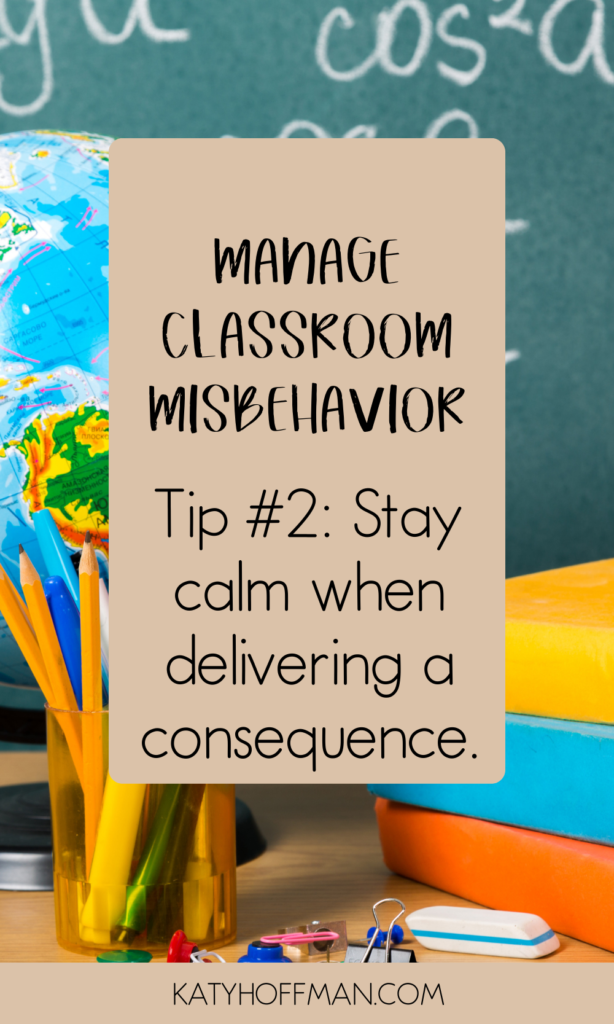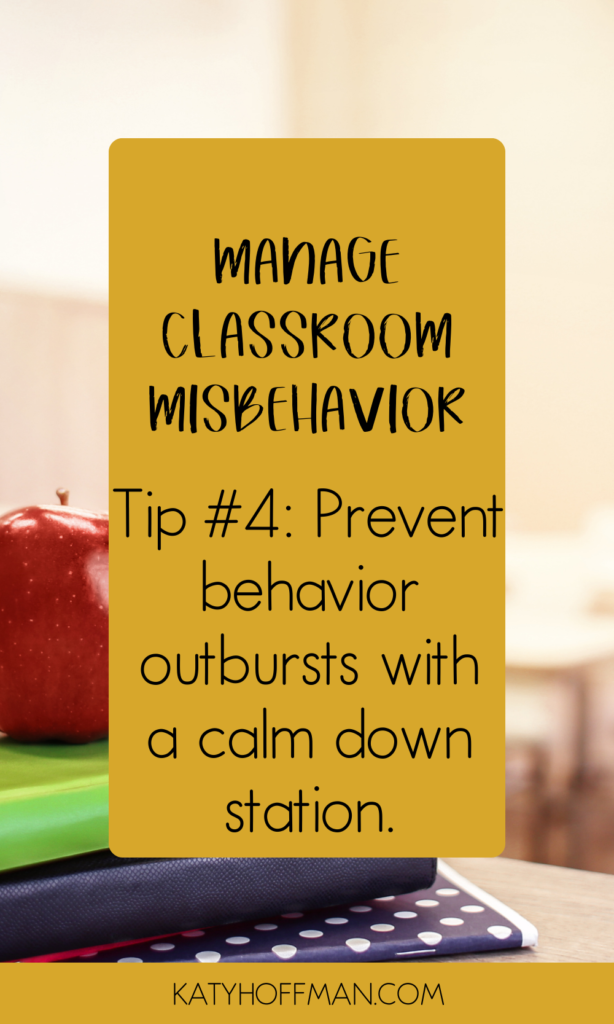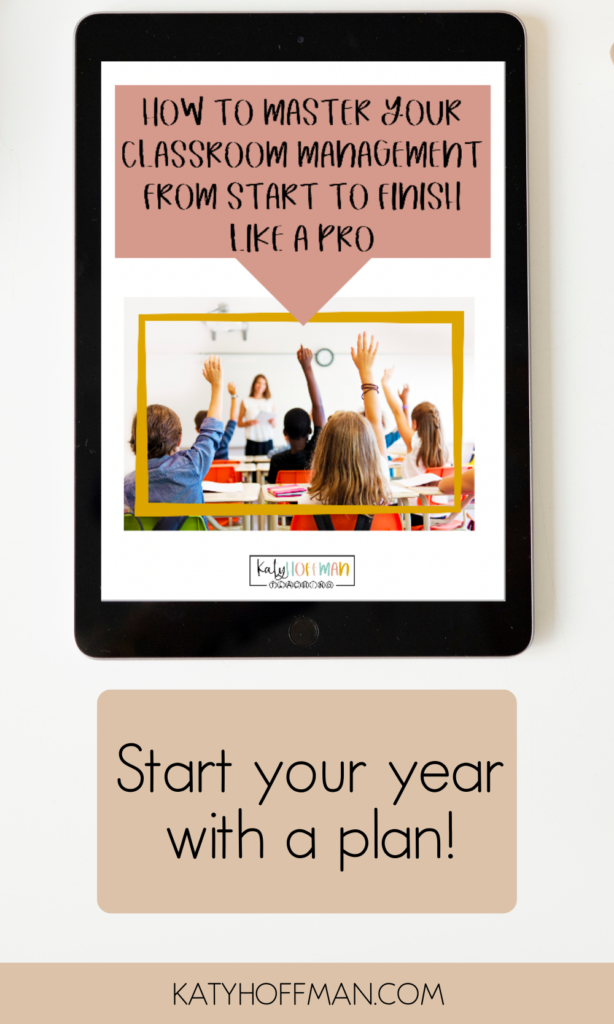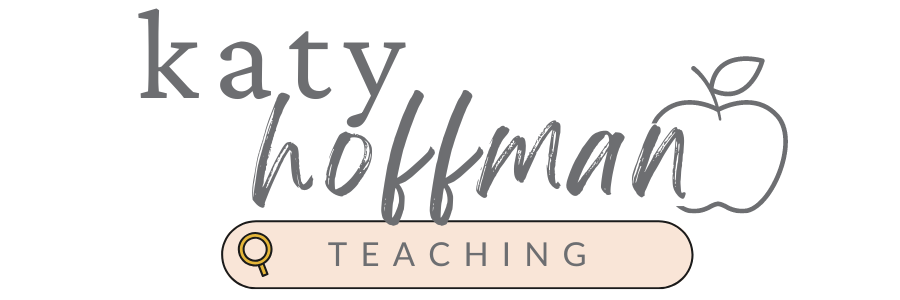Manage Classroom Misbehavior Calmly and Confidently with These 5 Stragies
Would you believe me if I told you that I had to handle classroom misbehavior within an hour of the first day of school? In 10 years of teaching, I’ve never experienced such a short honeymoon period…I truly was shocked…and I should have taken that as a HUGE sign that the entire year would be filled with misbehavior. Haha! You never know when or where you will need to step in and manage classroom misbehavior. Keep reading for 5 practical ideas for managing classroom misbehavior calmly and preventing behavior problems before they happen.
#1 – Extinguish Classroom Misbehavior with Positive Reinforcement

One of the most common classroom misbehaviors is blurting!! I swear…it might just be my biggest pet peeve. Nothing irritates me more than when we are in the groove of a lesson, and a student blurts out an answer or asks what’s for lunch.
Now the entire class is off track, and I have to pull students back together while trying to keep my train of thought moving.
As much as I want to call out the student…I can’t! It’s probably one of the worst things you can do. For some students, blurting is a way to get attention.
In order to extinguish the behavior, I always start by ignoring the comment and just keep trucking through the lesson. This teaches my students to also ignore the blurt-out because they know that I’m not going to address it.
If the blurt-outs continue, I’ll start praising students who are listening and on-task.
If by chance, the student who is blurting begins to listen and follow the expected target behaviors, I will immediately praise them.
Ignoring, when done correctly, is usually enough to extinguish behaviors. If more than one student has a bad habit of blurting, you may want to resort to a class challenge like Tic-Tac-Toe.
When students can listen without interrupting, they get to place an X or O on the tic-tac-toe board. If a student blurts-out, the teacher gets to place a token on the board. If the class reaches 3 in a row, they can have a small reward like extra recess, early to lunch, classroom game, piece of candy, etc.
#2 – Stay Calm when Delivering a Consequence for classroom misbehavior

Depending on the day you have had, the patience that you have had to show, and the situation…some classroom misbehavior can really make your blood boil.
I am guilty of losing control, but I quickly realized that teachers are under extreme scrutiny. We just can’t afford to lose our tempers, and it really is damaging to relationships.
In order to deliver consequences calmly, I take a deep breath and count to 10. This allows me to gather my composure and think through how I will best handle the situation.
I know what you are wondering…what about your class? It’s better for them to wait for you to take a tiny time-out than to witness you losing your cool in front of everyone.
#3 – Use a Signal to Get Students Back on Track After a Disruption

Disruptions happen ALL the time in the classroom. Teachers come in and need you for something, other students cause distractions, misbehavior can cause a break in learning. Whatever the case, it can be hard to re-engage students and regain attention after a disruption.
The best classroom management strategies that I have found for managing a disruption is to use your attention grabber to get everyone back with you or have students turn and talk to someone next to them to remind them what the expectations are in that moment (this works best for larger distractions like misbehavior, fire drills, etc.)
#4 – Prevent classroom misbehavior with a Clam Down Station

I always say that the best classroom management strategies involve playing a good defense to prevent common classroom misbehaviors.
Last year, I learned that some students just get overwhelmed with content, emotions, and stimulus. Providing these students a break allows them to regulate their emotions before it turns into classroom misbehavior.
You can find the Calm Down Station here, where students will walk through a series of self-regulation steps so they can return to learning and avoid a huge meltdown.
1- Breathing Exercise
2- Identify Emotions
3- Engage in a Calm-Down Activity
4- Make a Plan (teacher reviews plan)
#5 – Involve Families as Partners in Classroom Management

We need families more than ever to support us with classroom management and especially when classroom misbehavior comes up. Creating a positive relationship with families makes those hard behavior conversations go a little more smoothly and fosters support at home with helping to improve the misbehavior. Although it involves a little effort on our part, it is absolutely worth it in the long run
First, make sure families are aware of your classroom management system and the consequences you enforce. Communication is key! You don’t want to catch them off guard when you have to make those tricky phone calls.
Next, make a positive phone call home during the first week of school. This establishes trust, makes the parents feel like you care and notice their child, and opens the door for more communication in the future.
Finally, create a system for regular positive communication home. This can be a phone call, note, or my personal favorite…student shout-outs! I make this part of my daily routine where I choose three students to recognize for behavior, work ethic, and one general shout out. It’s simple, write a personal note, and present the shout-outs at the end of the day. Then, encourage the students to show their families the shout-out when they get home. This is an easy way to notice students and communicate with parents how awesome their kiddos are.
I hope these ideas sparked an idea that would be helpful to you in your classroom when handling and preventing classroom misbehavior.
If you are just getting started with classroom management, make sure to grab the guide below for a proven plan for success!

Chat next time,

